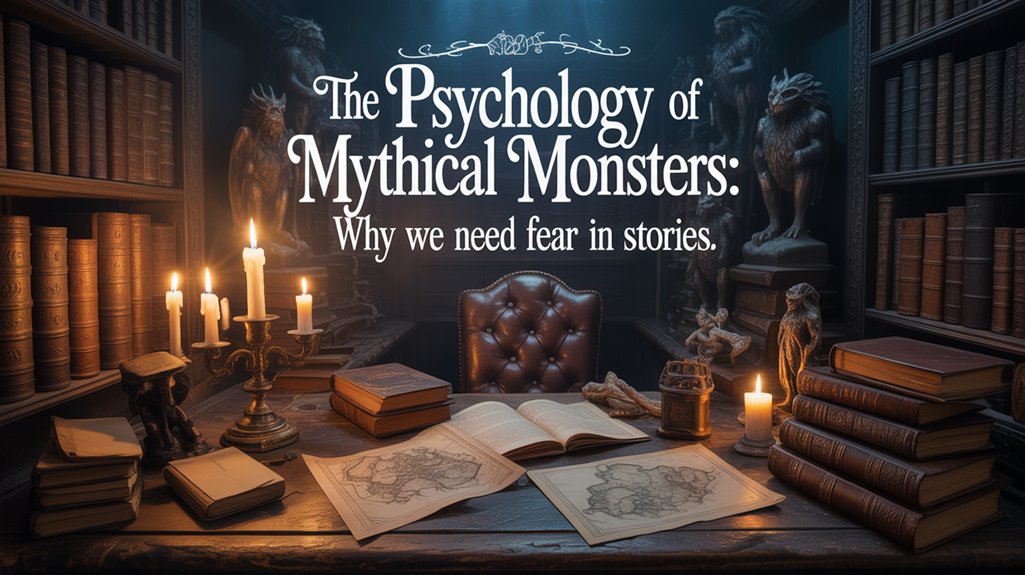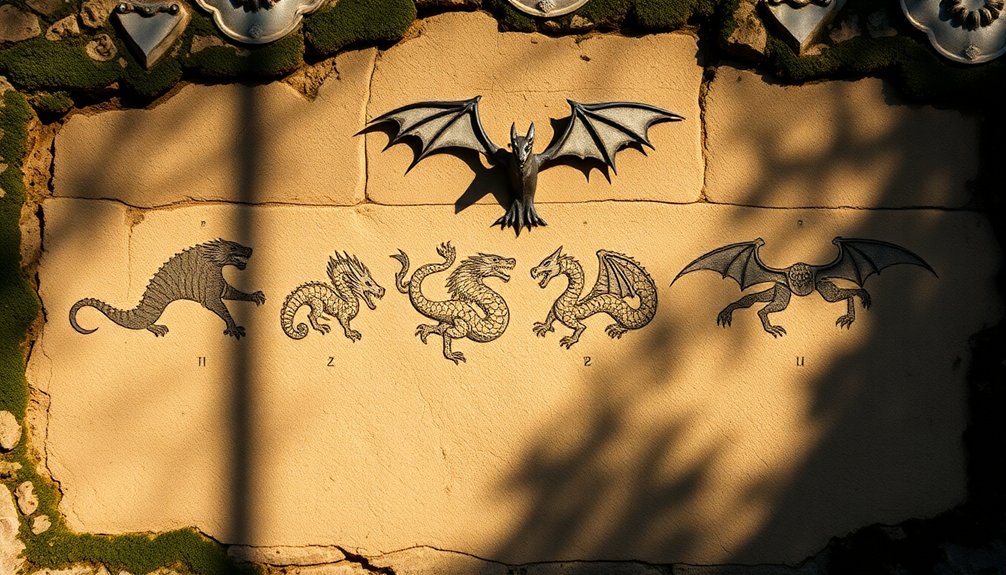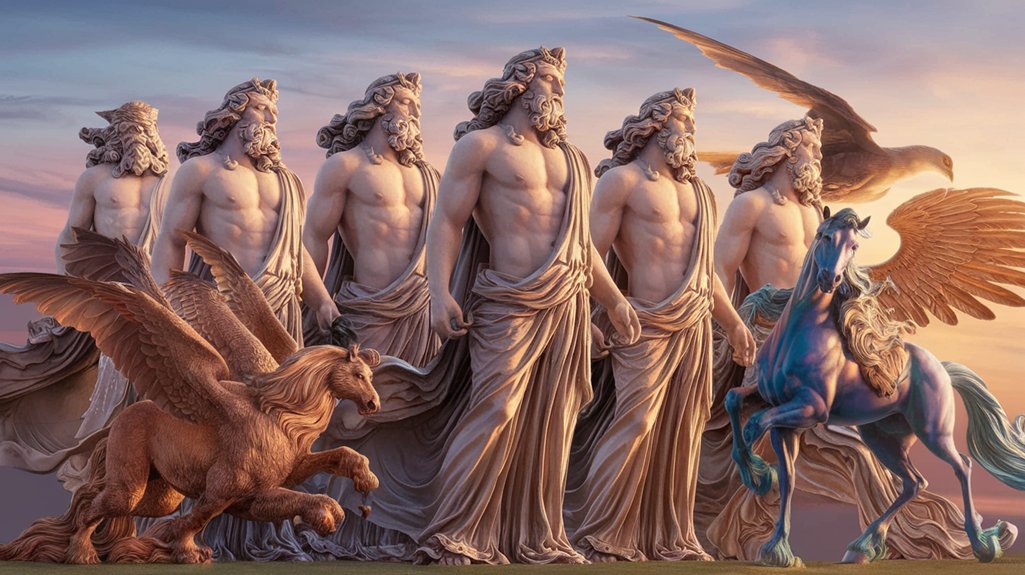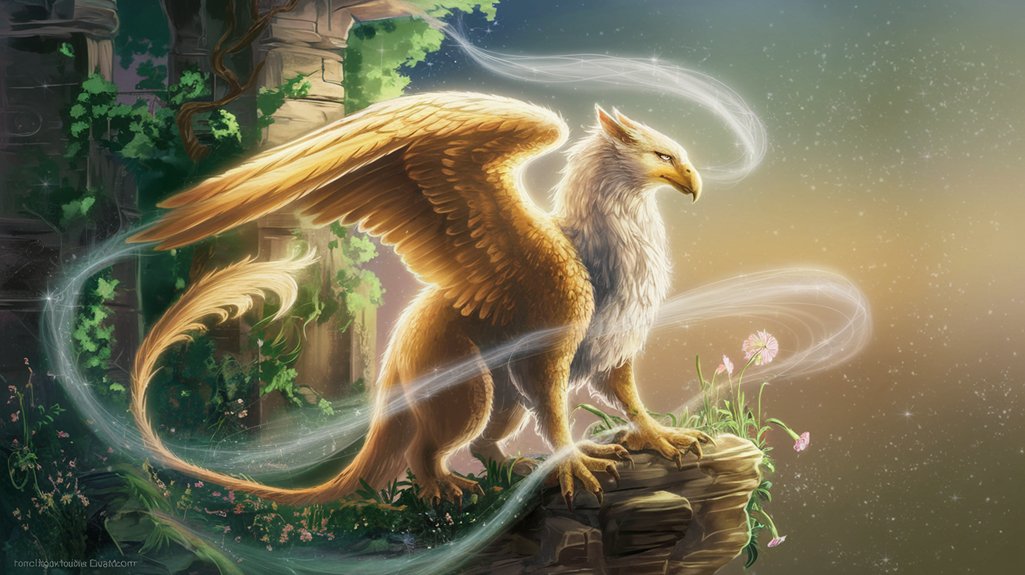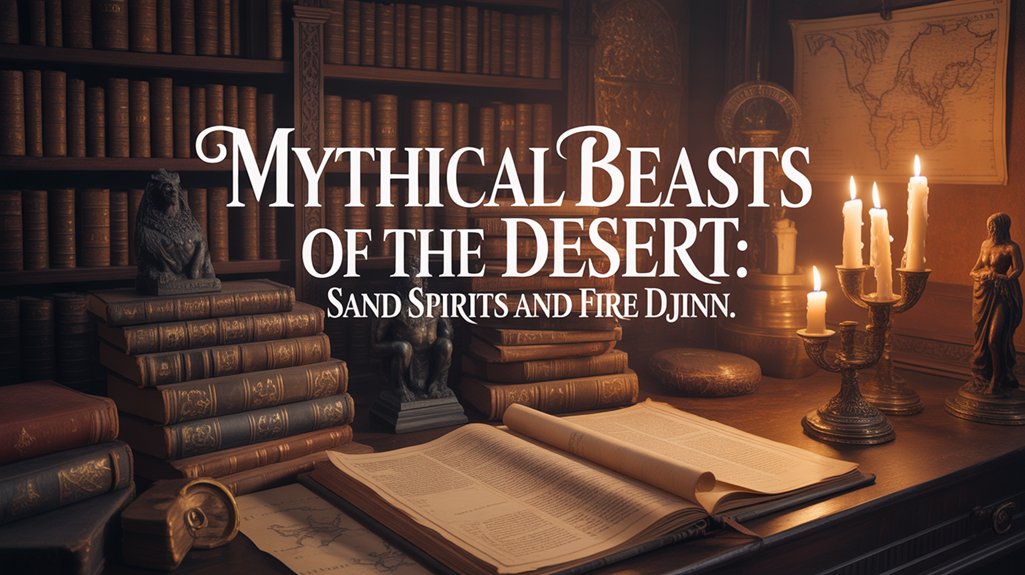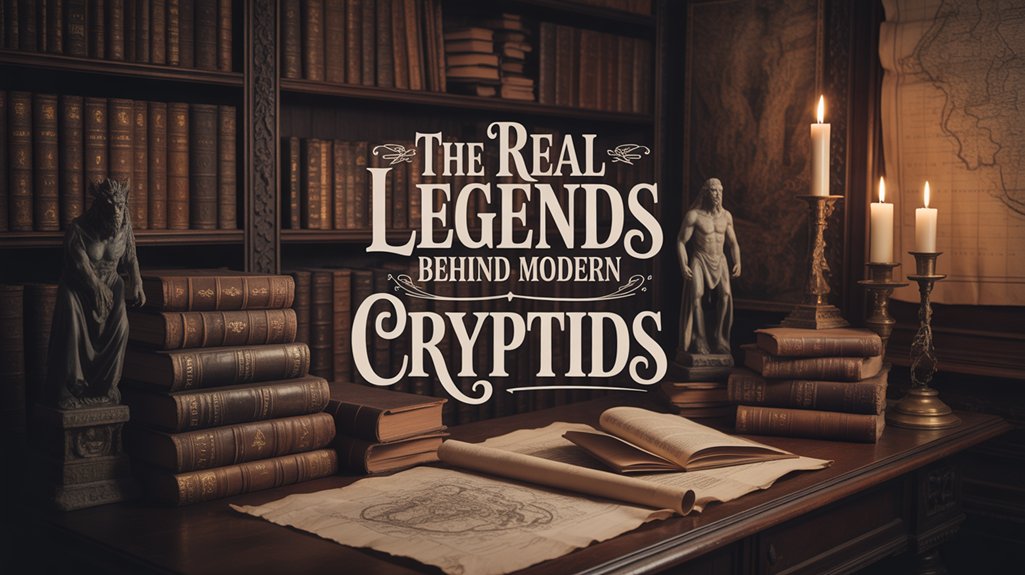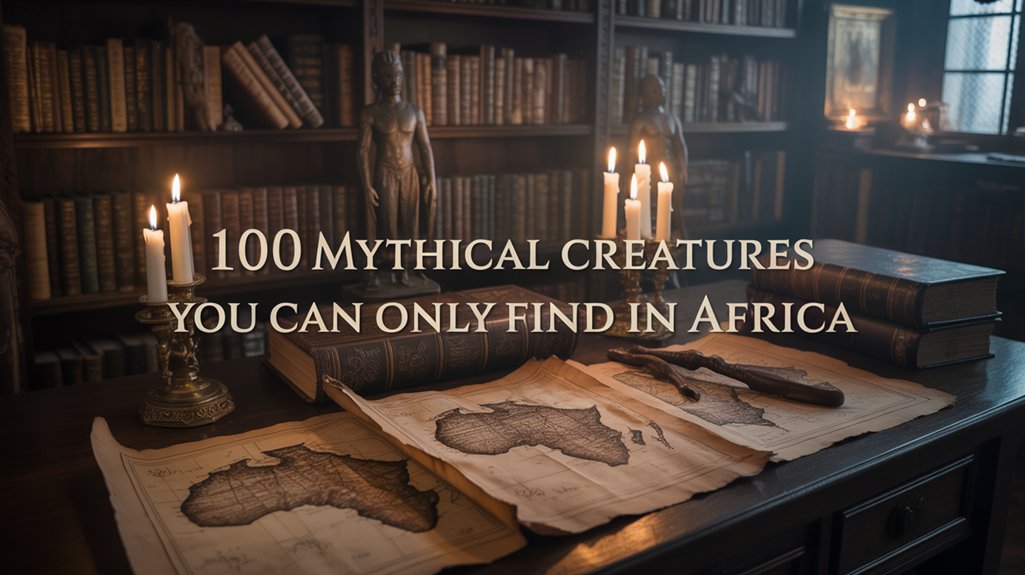
Mythical monsters serve as psychological laboratories where humanity rehearses ancestral terrors within narrative’s protective boundaries, their eldritch forms encoding civilization’s deepest anxieties since Mesopotamian scribes first inscribed Lamashtu onto clay around 3000 BCE. The amygdala processes these chimeric threats—Medusa’s petrifying gaze, vampires’ mortality-defying hunger—triggering controlled fear responses that build emotional resilience through safe exposure. Each generation resurrects these archetypal horrors to confront contemporary darkness, altering werewolves and zombies into vessels for exploring societal disintegration and shadow integration. The sacred architecture of monster narratives reveals how confronting fictional terrors strengthens our capacity to navigate existential uncertainties that lurk beyond culture’s fragile borders.
Table of Contents
ToggleKey Takeaways
- Fear in stories triggers survival instincts, allowing safe emotional rehearsal and building psychological resilience through controlled exposure to threats.
- Monsters symbolize societal anxieties and cultural values, serving as encrypted warnings about hubris, mortality, and social disintegration across civilizations.
- Confronting fictional monsters activates neurological reward systems, providing therapeutic release while strengthening emotional fortitude without real danger.
- Monster narratives facilitate shadow integration, revealing repressed desires and hidden psyche aspects necessary for psychological wholeness and self-understanding.
- Archetypal monsters resurge cyclically across generations, addressing timeless existential questions while adapting to contemporary fears and societal transformations.
Fear’s Universal Human Grip

When primordial darkness first stirred the human psyche, fear emerged not as weakness but as the species’ most essential guardian—an ancient sentinel that has walked alongside *Homo sapiens* through millennia of evolutionary refinement.
This eldritch force courses through neural pathways, triggering cascades of adrenaline and cortisol that prepared ancestral hunters for survival. Fear’s grip manifests through visceral emotional responses: accelerated heartbeats, dilated pupils, muscles coiled for immediate action.
The amygdala, that almond-shaped oracle buried deep within temporal lobes, processes threats before conscious thought intervenes. Ancient peoples recognized this power, weaving it into oral traditions that altered abstract dangers into chimeric forms—dragons embodying natural disasters, vampires personifying disease, wraiths materializing grief’s consuming shadow.
These narratives served dual purposes: warning systems encoded in metaphor, psychological armor forged through repeated exposure. By confronting fear within story’s protected boundaries, individuals developed mastery over their anxieties, altering paralysis into agency. Every culture crafted its own monster reflecting societal fears, from the Wendigo of Algonquin legend to the Qalupalik lurking beneath Inuit ice, each creature embodying the specific terrors that haunted their communities.
##
Fear itself emerges from primordial neural pathways honed across millennia of predation and survival, those ancient circuits firing when confronted with fanged chimeras lurking in cave-shadow darkness or serpentine forms coiled in nightmare.
These eldritch beings transcend mere entertainment—they function as cultural vessels carrying encoded warnings, taboos, and collective traumas through generations, their monstrous forms shifting to mirror each era’s deepest anxieties.
Through controlled exposure to such terrors, the psyche achieves catharsis while integrating shadow aspects of consciousness, altering primal dread into psychological growth that Jung recognized as essential to individuation.
Evolutionary Roots of Fear
Before humanity erected its first temples or inscribed its earliest myths onto clay tablets, the architecture of terror already existed within the primitive brain—a legacy written not in scripture but in neural pathways.
Evolutionary psychology reveals how survival mechanisms emerged through millennia of mortal danger. The amygdala, that ancient sentinel, processes threats with primordial efficiency—triggering adrenaline surges, accelerating heartbeats, preparing flesh for confrontation or retreat.
Primate studies illuminate why serpentine forms and arachnid geometries elicit visceral dread; our ancestors who feared such creatures survived to propagate their cautious genes.
These eldritch terrors—arachnophobia, nyctophobia—represent universal inheritances from epochs when darkness concealed genuine predators.
Even controlled exposure through narrative allows practitioners to rehearse emotional responses, converting fear into adaptive wisdom within sanctuary’s embrace.
Monsters as Cultural Metaphors
Although ancient civilizations never codified the practice explicitly, they understood instinctively that monsters function as living hieroglyphs—encrypted warnings etched into collective consciousness.
The Gorgons materialized as punishment for hubris, their serpentine locks crystallizing moral boundaries into stone. Vampires emerged from humanity’s rebellion against mortality, chimeric figures straddling life’s threshold with eldritch hunger.
Cultural symbolism alters these creatures into mirrors reflecting what societies dare not speak aloud—the Yeti embodies our terror of untamed wilderness, while zombies manifest contemporary dread of facelessness, conformity’s specter consuming individuality.
Each monster encodes societal fears within its anatomy: claws representing nature’s vengeance, fangs symbolizing forbidden desires, vacant eyes warning against dehumanization.
The Mahaha from Inuit mythology exemplifies this pattern—a skeletal, ice-blue creature whose freezing touch and perpetual grin transform the Arctic’s deadly cold into a tangible, terrorizing entity that teaches survival through cautionary legend.
These folklore sentinels guard cultural values through cautionary whispers, their monstrous forms converting abstract anxieties into tangible nightmares that generations inherit, preserve, remember.
Catharsis Through Controlled Terror
When shadows dance across cinema screens and pages whisper of ancient terrors, humanity’s psyche undergoes a peculiar alchemy—transforming genuine dread into therapeutic release.
This cathartic release operates through benign masochism, where eldritch horrors trigger adrenaline surges, heightened heart rates, and neurological reward responses—all within sanctuary’s embrace.
The chimeric beasts haunting our narratives permit emotional exploration of mortality, loss, and existential anxiety without consequences. Neural pathways illuminate as audiences confront vampiric predators and cyclopean entities, processing deep-seated fears through controlled exposure.
This phenomenon builds psychological resilience. Terror becomes medicine. The brain’s reward circuitry activates during these encounters, flooding consciousness with satisfaction from surviving imagined dangers, strengthening coping mechanisms for confronting reality’s unpredictable darkness.
Ancient storytellers understood this primal necessity—that facing monsters in fiction prepares souls for life’s genuine horrors.
Shadow Integration and Growth
The monster’s true gift emerges not merely in the survival of its encounter but in the mirror it holds to humanity’s concealed nature.
Through confrontation with eldritch beings—the chimeric amalgamations of terror dwelling in narrative’s liminal spaces—individuals access what Jung termed the shadow, those disowned fragments of psyche relegated to darkness.
Shadow acceptance reshapes the monstrous from external threat to internal teacher, compelling recognition of repressed desires, unacknowledged rage, forbidden yearnings.
This integration doesn’t domesticate darkness but rather expands consciousness to encompass it.
The werewolf embodies bestial impulse; the vampire, predatory hunger; each creature a cartography of denied self.
Those who face these archetypal horrors, who permit their disturbing truths entry into awareness, nurture emotional resilience—not through denial but through the courageous act of witnessing one’s complete nature.
Wholeness demands embracing monstrosity within.
Ancient Monster Tales Emerge

The Tigris-Euphrates River Valley birthed humanity’s first documented monster narratives around 3000 BCE, where Mesopotamian demons—eldritch manifestations of drought, pestilence, and chaotic floodwaters—emerged from clay tablets as guardians of cosmic balance.
These chimeric entities weren’t mere villains but embodied the precarious relationship between civilization and the unpredictable forces that could obliterate it: the rivers that nourished could also destroy, and the storms that brought life-giving rain carried devastation.
Flood myths became the crucible where moral order crystallized, with monsters serving as divine instruments punishing hubris while reinforcing humanity’s fragile covenant with the natural world.
Mesopotamian Demons, 3000 BCE
Beyond the fertile crescents where Tigris and Euphrates merged with human ambition, ancient Mesopotamians conjured forth a pantheon of malevolent forces—demons who didn’t merely haunt the periphery of existence but inhabited its very marrow.
These eldritch entities, chronicled from 3000 BCE onward, embodied civilization’s deepest terrors. Lamashtu prowled birthing chambers, her chimeric form thirsting for infant blood—a manifestation of maternal anxiety rendered supernatural.
Demonology practices flourished through incantations etched in cuneiform, ritual technologies designed to banish what couldn’t be controlled through medicine or reason. Cultural narratives altered disease and drought into adversaries one could name, confront, battle.
The demons served dual purpose: cautionary architecture reinforcing divine hierarchy while providing psychological frameworks for comprehending random catastrophe. Here, fear became tool rather than paralysis—structured, ritualized, survivable.
Tigris-Euphrates River Valley Origins
Where twin rivers carved serpentine channels through alluvial plains, humanity’s earliest monster-makers pressed reed styluses into wet clay, immortalizing terrors that prowled the boundaries between settlement and wilderness. Sumerian mythology birthed eldritch guardians and chimeric predators—Humbaba’s cedar-realm dominion, Lamassu’s protective vigilance—establishing narrative frameworks that altered environmental anxieties into teachable encounters with the monstrous.
| Creature | Cultural Function |
|---|---|
| Humbaba | Wilderness embodiment, divine punishment |
| Lamassu | Threshold protection, cosmic order |
| Apkallu | Pre-flood wisdom, civilizing force |
| Anzû | Chaos manifestation, divine challenge |
| Pazuzu | Disease vector, paradoxical protection |
These Akkadian tales encoded moral lessons within mythical storytelling, addressing ancient fears through cultural reflection. The Epic of Gilgamesh crystallized humanity’s struggle against forces beyond comprehension. Pure survival mythology.
Flood Myths and Moral Order
Catastrophic waters rising beyond containment—this primordial terror saturates humanity’s oldest narratives, converting environmental devastation into cosmic judgment.
Flood symbolism emerges from Mesopotamia’s Utnapishtim through Noah’s deluge, changing chaos-waters into eldritch arbiters of moral decay. These deluges weren’t mere natural disasters—they represented divine reckoning against societies that abandoned sacred covenants.
The Sumerian tablets, inscribed circa 2100 BCE, depict Enlil’s wrath manifesting through torrential annihilation, erasing civilizations that embraced hubris over humility. Monstrous forces—chimeric dragons, vengeful deities commanding primordial seas—embodied humanity’s terror of losing dominion over creation itself.
Each culture constructed similar warnings: transgress divine law, invite apocalyptic renewal. The flood becomes psychological necessity, a communal acknowledgment that moral frameworks prevent societal dissolution.
Through catastrophe’s mythology, ancient peoples established boundaries between civilization and chaos.
Greek vs. Egyptian Beasts

While Greek and Egyptian civilizations both conjured monstrous guardians to embody their deepest anxieties and cosmic truths, their beasts emerged from fundamentally different spiritual landscapes—one rooted in the turbulent psychology of mortal struggle, the other in the calculus of eternal judgment.
Greek Beasts like the Hydra and Chimera externalized internal conflicts, their chimeric forms representing humanity’s struggle between Chaos Order. The Minotaur’s labyrinthine prison reflected civilization’s dark underbelly, while the Hydra’s regenerating heads symbolized resilience against seemingly insurmountable adversity.
Egyptian Beasts served different purposes entirely. Ammit and the Sphinx weren’t psychological mirrors but cosmic arbiters, weighing souls against Ma’at’s feather of truth.
| Greek Beasts | Egyptian Beasts |
|---|---|
| Internal psychological conflicts | Afterlife judgment mechanisms |
| Chaos within civilization | Moral consequences |
| Heroic triumph possible | Divine verdict absolute |
| Morality Themes through struggle | Wisdom through cosmic order |
Both mythologies understood that fear clarifies values. Yet their monsters spoke different truths—one whispered of human complexity, the other pronounced eternal verdicts.
Monsters Embody Cultural Anxieties
Beyond the architectural distinctions between Greek heroes and Egyptian arbiters lies a deeper truth: monsters don’t merely populate mythologies—they crystallize the unspoken terrors that haunt entire civilizations.
Mesopotamian demons embodied pestilence and famine, their eldritch forms manifesting tangible dread of agricultural collapse. The Gorgons served as cultural representation of divine retribution, petrifying those who succumbed to hubris and carnal excess. Japanese kaidan released vengeful spirits upon the living, their chimeric nature reflecting societal anxieties about improper burial rites and unfulfilled obligations to ancestors.
This societal reflection transcends temporal boundaries:
- Disease materialized as plague-demons in Babylonian incantations
- Drought crystallized into serpentine chaos-monsters threatening cosmic order
- Death’s impropriety spawned onryō, spirits demanding ceremonial satisfaction
- Moral transgression birthed hybrid abominations as cautionary architecture
- Modern cinema resurrects ancestral fears through racialized horror, continuing ancient traditions
These manifestations aren’t arbitrary. They’re psychological excavations, revealing what communities can’t articulate through conventional discourse. Monsters speak forbidden truths.
Medusa, Minotaur, Hydra Explored
Three chimeric figures from Hellenic antiquity—Medusa with her petrifying gaze, the Minotaur imprisoned within Knossos’s winding corridors, the Hydra spawning doubled heads from severed necks—manifest distinct psychological terrors that haunted the Greek consciousness circa 800-146 BCE.
Medusa’s evolution from beautiful maiden to monstrous Gorgon embodies punishment’s cruel metamorphosis, wherein victimhood becomes monstrosity itself.
The Minotaur’s dual nature, half-man and half-beast, represents civilization’s perpetual struggle against the savage impulses trapped within human architecture, while the Hydra’s regenerative horror illustrates how confronting one’s fears often multiplies them exponentially, creating an eldritch cycle of psychological proliferation.
Medusa: Transformation and Punishment
Throughout ancient Mediterranean mythologies, alteration serves not merely as narrative device but as profound psychological reckoning—a change that strips away the illusion of fixed identity and reveals the chimeric nature lurking beneath human form.
Medusa’s punishment exemplifies this existential terror: violated within Athena’s sacred precinct by Poseidon, she becomes monstrous through divine retribution, her beauty weaponized into petrifying horror. Transformation’s symbolism here transcends simple vengeance. It excavates deeper truths about victim-blaming, the eldritch power of female rage, and society’s need to contain what threatens patriarchal order.
Her serpentine locks writhe with collective anxiety about feminine sexuality unbound. The psychological resonance endures because Medusa embodies transformation’s cruelest paradox—punishment for violation she didn’t choose, her agency obliterated twice. First by assault. Then by becoming the monster others feared she’d become.
Minotaur: Trapped Beast Within
Where Medusa’s metamorphosis weaponized the female form through external curse, the Minotaur’s monstrosity springs from contaminated bloodlines—the biological consequence of Queen Pasiphaë’s unnatural desire for Poseidon’s sacred bull.
This chimeric fusion of man and beast becomes symbolic representation of internal struggles against base impulses, the animalistic drives civilization demands we suppress.
Imprisoned within Knossos’s labyrinthine bowels, the creature embodies psychological entrapment, wandering endless corridors that mirror the mind’s own recursive patterns.
The beast can’t escape its nature. Neither can we.
Theseus’s eventual slaying represents temporary victory over primal chaos, yet the Minotaur’s eldritch presence persists in collective memory—a reminder that our savage inheritance lurks beneath refined veneers, forever pacing the dark passages of human consciousness, demanding acknowledgment, refusing domestication.
Hydra: Multiplying Our Fears
While Medusa petrified through visual contact and the Minotaur embodied singular bestial rage, the Hydra presents a more insidious psychological paradigm—fear that proliferates through confrontation itself.
This chimeric serpent from Greek antiquity, guardian of the Lernaean swamps, demonstrates how poorly executed anxiety confrontation breeds exponential dread. Each severed head spawning two more. The monster embodies cascading panic attacks, rumination spirals, avoidance behaviors that metastasize rather than diminish.
Hercules’s second labor required strategic fire cauterization rather than brute force—an ancient understanding of fear management principles. The Hydra’s aquatic domain connects it to primal, eldritch chaos lurking beneath consciousness’s surface, those uncontrollable elements resisting rational suppression.
These regenerative heads symbolize how engagement without proper psychological tools alters manageable concerns into overwhelming multitudes, teaching that confronting inner demons demands both courage and tactical wisdom.
Vampires in Film and Literature
The vampire emerges from the shadowed margins of human consciousness as perhaps the most enduring and psychologically complex of all mythical creatures, its pale visage haunting the collective imagination across centuries of literary and cinematic expression. This eldritch entity embodies humanity’s profound terror of mortality symbolism, altering death’s inevitability into something simultaneously seductive and abhorrent.
The vampire allure operates through dangerous charisma, forcing audiences to confront attraction intertwined with annihilation.
Psychological Dimensions of the Vampire Mythos:
- Bram Stoker’s 1882 Dracula weaponized contagion and sexuality as metaphors for Victorian-era anxieties about foreign influence and bodily autonomy.
- Cinematic interpretations, from Lugosi’s 1931 portrayal to Oldman’s 1992 reimagining, reflect each generation’s chimeric fears.
- Vampire narratives explore repressed desires, granting permission to examine forbidden territories of human experience.
- Contemporary variations span romanticized Twilight immortals to sardonic *What We Do in the Shadows* predators.
- The creature’s duality—seduction merged with predation—exposes our conflicted relationship with power and surrender.
Fear Activates Brain’s Amygdala
Beyond the narrative constructs of vampiric lore lies the physiological architecture that renders such creatures genuinely terrifying—the amygdala, an almond-shaped neural sentinel nestled deep within the brain’s temporal lobes, orchestrates humanity’s most primal response to supernatural threats.
When confronted with eldritch imagery—fanged chimeric entities emerging from moonlit shadows—amygdala activation triggers cascading neurochemical reactions: accelerated heart rate, adrenaline surges, muscles tensed for confrontation or flight.
These fear responses aren’t aberrations but survival mechanisms honed across millennia. Horror narratives utilize this ancient circuitry deliberately, creating controlled environments where audiences can experience genuine physiological terror without actual peril.
This phenomenon, termed “benign masochism” by contemporary researchers, explains why seekers of liberation find catharsis in darkness—the amygdala fires, the body prepares for battle against nocturnal predators, yet conscious awareness recognizes the safety of fictional boundaries.
Within this liminal space between danger and security, fear evolves from constraint into freedom, allowing explorers to confront mortality’s deepest mysteries without consequence.
Modern Fears, Ancient Frameworks
Though separated by millennia and continents, humanity’s foundational terrors persist beneath contemporary anxieties like geological strata—each modern fear reveals ancient bedrock when excavated with careful attention. Vampires encode mortality’s dread, their undead nature mirroring Mesopotamian demons that stalked ancient Akkadian nights.
Zombies embody societal disintegration, yet their shambling forms echo Greek myths of hubris and divine vengeance. These monsters operate as fearful symbolism, conveying timeless dreads into contemporary vernacular.
The hybridization inherent in mythic archetypes—Gorgons with serpentine hair, Japanese kaidan spirits crossing liminal boundaries—demonstrates culture’s perpetual need to render abstract anxieties concrete.
Gothic literature’s eldritch horrors birthed modern cinema’s chimeric creations, each iteration addressing its era’s particular concerns while maintaining ancient frameworks. Disease becomes demonic possession. Economic collapse manifests as apocalyptic hordes.
The monster evolves, adapts, changes—yet its psychological function remains unchanged. It names the unnameable. It gives form to formlessness. Ancient wisdom wrapped in modern flesh.
Stories Circle Back Forever
Repetition forms storytelling’s sacred architecture, each retelling a ritual reinscribing collective memory onto new consciousness.
Monster narratives emerge, fade, resurge—timeless themes wrapped in contemporary flesh. The chimeric beast that terrorized Bronze Age settlements becomes the eldritch horror haunting digital screens, different vessels carrying identical existential dread. These cycles aren’t mere coincidence. They’re necessity.
Each generation confronts death, chaos, moral ambiguity. Each generation resurrects the archetypes that helped their ancestors navigate identical terrors.
We inherit our terrors and remake them—ancient archetypes reborn to guide each generation through unchanging existential darkness.
Societal reflections shift—vampires change from plague-carrying revenants to seductive outsiders to metaphors for capitalism—yet the core function persists. The framework adapts.
This cyclical return demonstrates humanity’s enduring relationship with fear itself. We don’t outgrow monsters; we reshape them.
The stories circle back because the questions they address remain unanswered, perhaps unanswerable. Life, death, the unknown—these mysteries demand perpetual exploration through narrative.
The monsters will return. They must. We require them.
Frequently Asked Questions
How Do Children’s Developmental Stages Affect Their Response to Monster Stories?
Children’s fear comprehension evolves through distinct phases, revealing their relationship with monstrous tales.
Toddlers can’t distinguish fantasy from reality, experiencing visceral terror at chimeric beings.
By ages four through seven, youngsters develop imaginative play capacities, engaging monsters as symbolic challenges they’re compelled to master.
Pre-adolescents, possessing sophisticated cognitive frameworks, seek increasingly eldritch narratives that mirror internal anxieties.
Each developmental threshold opens deeper psychological engagement with ancient archetypal fears, allowing autonomous exploration of darkness within safe, narrative boundaries.
What Role Do Monster Stories Play in Treating Anxiety Disorders?
In shadow-draped consultation rooms where fear takes form, therapeutic storytelling utilizes ancient monster narratives as anxiety management tools.
Clinicians employ archetypal terrors—dragons, chimeric beasts, eldritch entities—to externalize patients’ nameless dreads, altering overwhelming internal chaos into conquerable foes. This practice liberates sufferers from diagnostic labels’ constraints.
Through controlled exposure to mythic horrors, individuals reclaim autonomy over their psychological landscapes. The monster becomes mirror, then metaphor, then manageable. Brief, direct confrontation with symbolic fear builds resilience, offering freedom through mythological frameworks that culture has validated for millennia.
Are There Cultures That Developed Without Creating Mythical Monster Figures?
No documented civilization exists entirely without monster mythology.
Cultural variations reveal universal human necessity for shadow archetypes—though manifestations differ dramatically. Arctic Inuit conceived Mahaha, the eldritch tickler-demon. Aboriginal Australians birthed Yara-ma-yha-who from Dreamtime’s depths.
Even seemingly peaceful societies harbored chimeric fears. This mythological significance transcends geography, suggesting monsters aren’t cultural accidents but psychological imperatives. They embody what consciousness can’t rationally contain.
Freedom from monsters? Impossible. They’re the price humanity pays for imagination itself—eternal guardians at cognition’s boundaries.
How Do Video Games Influence Modern Perceptions of Traditional Monsters?
Video games alter ancient terrors into interactive encounters, where players don’t merely observe but *become* monster-slayers.
This fantasy immersion fundamentally changes the psychological impact—dragons shift from unknowable eldritch forces into quantifiable enemies with health bars, attack patterns, documented weaknesses.
The medium democratizes once-sacred knowledge, rendering chimeric beings as challenges to overcome rather than mysteries to fear.
Yet paradoxically, games like *Bloodborne* and *The Witcher* resurrect that primal dread, proving digital spaces can still hold genuine mythic power.
Can Exposure to Monster Stories Desensitize People to Real Dangers?
Like ancient torches illuminating cave shadows, monster stories don’t dull our survival instincts—they sharpen them.
Fear conditioning through cultural narratives actually improves emotional regulation, allowing individuals to rehearse threat responses within sovereign mental spaces.
Media influence of eldritch imagery fosters discernment rather than numbness; the chimeric forms in folklore teach pattern recognition, danger assessment, primal awareness.
This exposure liberates consciousness, granting practitioners autonomy to distinguish genuine peril from symbolic manifestation, thereby honoring ancestral wisdom while preserving modern vigilance.
Conclusion
Like shadows cast by an eternal flame, these eldritch narratives persist across millennia, their chimeric forms adapting to contemporary anxieties while retaining primal power. The amygdala’s response to mythical terrors hasn’t diminished; it’s merely altered, channeling ancient dread through modern vessels. We don’t outgrow our need for monsters—we resurrect them. Each generation reconstructs these liminal guardians, acknowledging that fear, when contained within story’s sacred bounds, transmutes into wisdom. The serpent eternally devours its tail.

